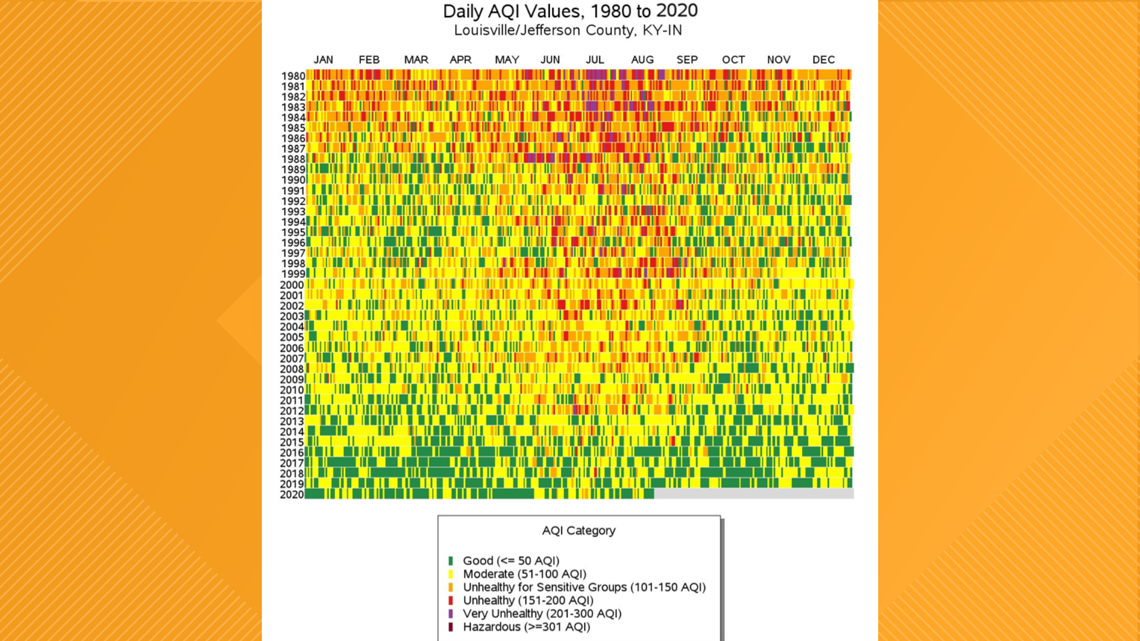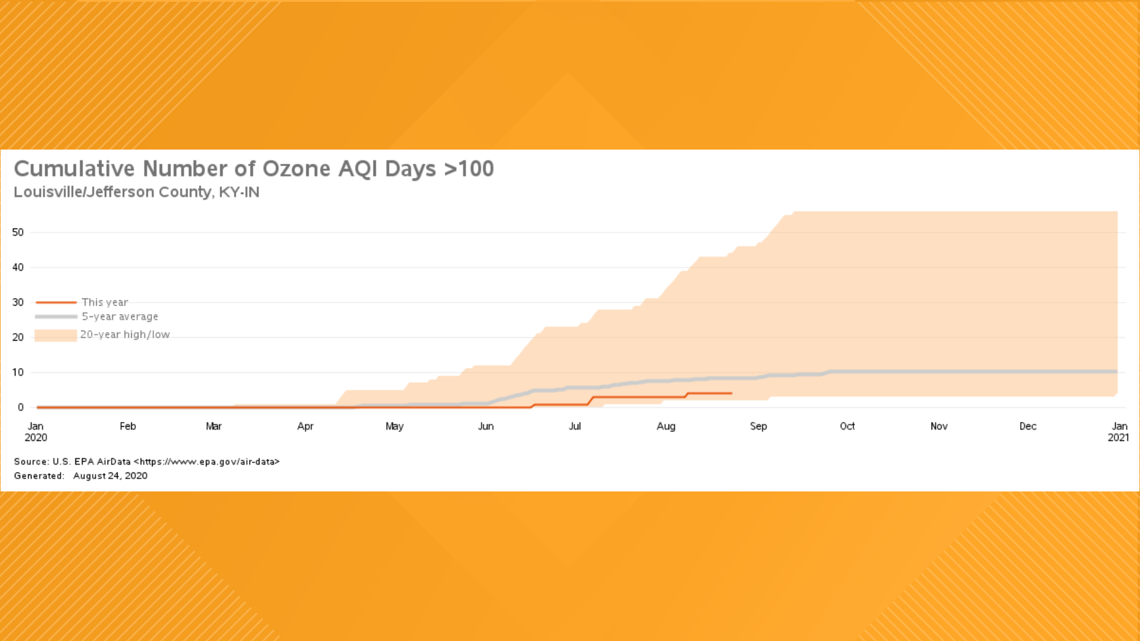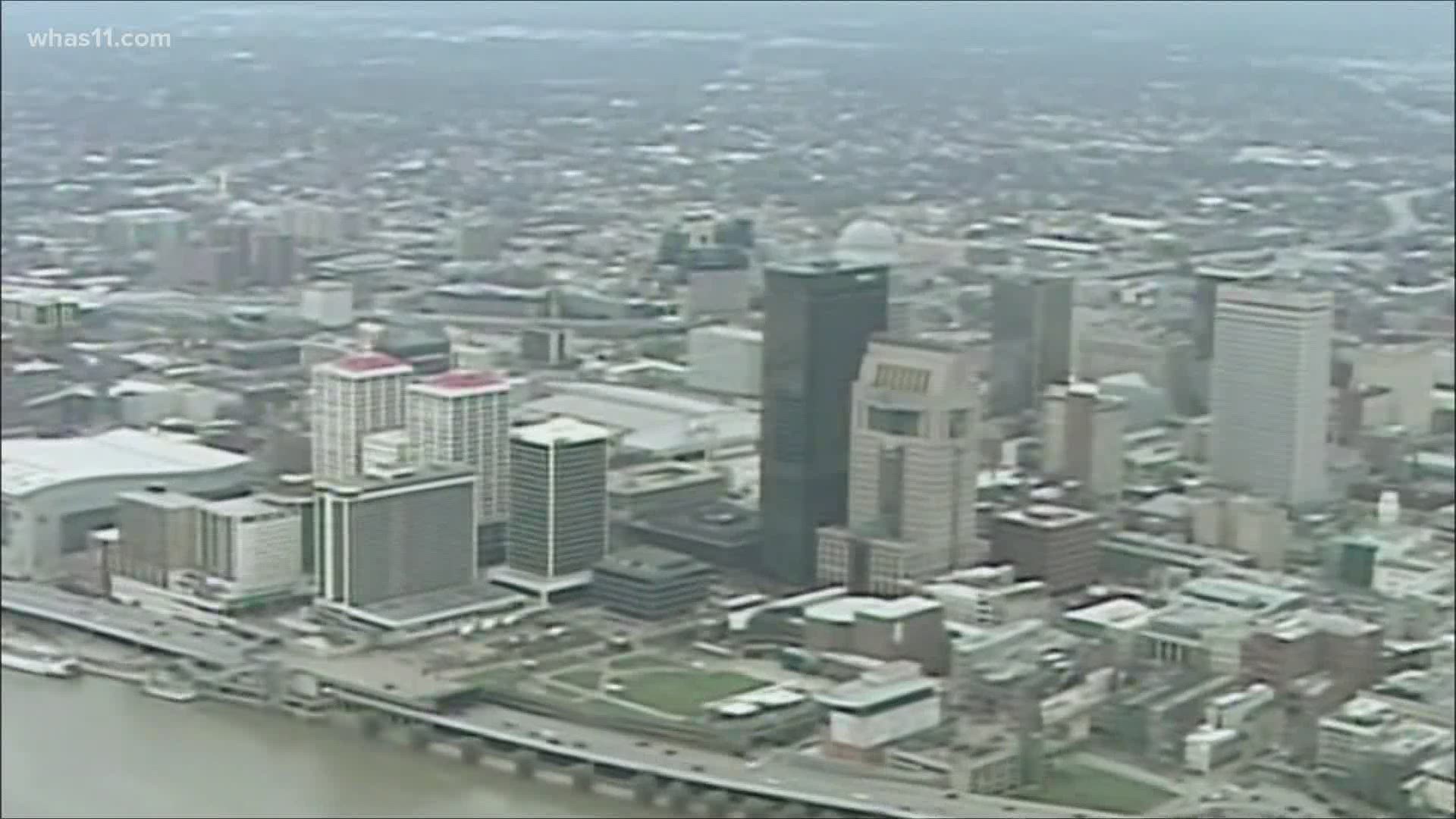LOUISVILLE, Ky. — Louisville has made great strides to improve its air quality over the decades. Recently the city was commended by the EPA for reducing sulfur dioxide emissions from the Mill Creek Generating Station.
While the air is cleaner, ozone continues to be a thorn in the city's side.
"We do have an ozone problem. I think there are several days a year when we exceed the standards for ozone emission,” said Dr. Aruni Bhatnagar, director of the Christina Lee Brown Envirome Institute. “We do not fully understand all the causes that they may be, but we think the major contributors are traffic and also geography."
Surface ozone is the result of a chemical reaction between certain organic gasses with sunlight and high heat - that's why it's a problem primarily in the summer. Car exhaust is the main source of the chemicals needed for the reaction and a contributor to the problem.
"We have to work on getting better emission standards and to be able to control the source pollution," Dr. Bhatnagar said.
Geography also plays a role as Louisville sits in a valley. Air tends to pool in valleys and can become very stagnant. This prevents ozone and other pollutants from being able to disperse and causes a feedback loop of dirty air.
Even though the city isn’t pleased with its current ozone situation, there has been significant progress made since 1980. Data from the EPA shows a dramatic decrease in days with ozone levels considered to be unhealthy. In 2019, Louisville only saw four days with unhealthy ozone.
Compare this to the 1980s and 90s - shown by the reds, oranges, and purples in the figure below. For example, 1984 had around 70 days with unhealthy ozone. This improvement is in part because of increasingly strict EPA guidelines and improved vehicle emission standards.


In fact, additional data from EPA indicates that Louisville is seeing an upward trend in the number of days with good air quality. 2020 is currently running slightly above the five-year average for days with good ozone air quality.
So far, 2020 has only seen a handful of days with ozone in the “moderate” category, most of which have taken place in the warm spring and summer months, as is typical.


As for days with poor air quality, 2020 is running below the five-year average and is toward the bottom of the 20-year high/low average. This continues to show a drastic increase in air quality.


For the elderly, those with weak immune systems, or other respiratory ailments, prolonged exposure to high ozone can make it difficult to breathe and result in other long-term problems.
"You can in fact develop lung cancer, cardiovascular damage, certainly life-threatening asthma attacks can be triggered by poor air quality," said Shannon Baker of the American Lung Association.
While governments continue to work to improve our air, community efforts also help.
"We can make a difference by our daily choices. When I have to idle my car in a line do I turn off the ignition or do I choose to idle? The answer is, roll the windows down and turn off the ignition when you can," Baker said.
►Make it easy to keep up-to-date with more stories like this. Download the WHAS11 News app now. For Apple or Android users.

